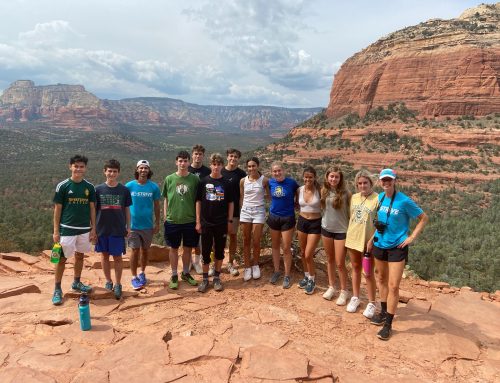Nestled in the Andes between the Sacred Valley and Cusco, there exists a magical place, a place where majestic condors spread their wings in flight, where sleepy spectacled bears enjoy fruit by the kilogram, where powerful pumas leap gracefully several feet in the air, and agile Andean cats dart nimbly, becoming nothing more than blurry shadows. These animals – and many more – live at Santuario Ccochahuasi, an area of refuge for members of native Andean species that have been injured in the wild or involved in illicit trafficking. The STRIVE interns, fresh off their heroic conquest of the ominous Mount Doom, visited Ccochahuasi on Saturday and marveled at the variety of creatures there.
There were of course the condors and pumas – today endangered, but once representations of divine power to the Incas – but also long-limbed spider monkeys, colorful macaws, curious capuchins, sedentary quails, and the national dog of Peru, the Peruvian Hairless Dog. On a guided tour of The Sanctuary, the interns learned a great deal about the various animals (the spectacled bears eat fifteen to twenty kilograms of fruit per day, for example), frollicked with llamas and alpacas, got up and close with an aggressive male vicuña, watched a puma jump eight feet to grab its lunch, and⸺finally⸺experiencing the flight of the condors, the second largest flighted birds on our planet.
Following the tour, the interns gathered information about volunteering at Ccochahuasi in the near future. Although nothing has been decided at present, the group certainly seems to be keen on the idea of dedicating at least one day later in the summer to cleaning⸺and possibly even constructing new⸺animal habitats, feeding the animals, and donating some of STRIVE’s fundraising money to aid Ccochahuasi in its noble mission of protecting the beautiful animals of the Cusco region,
Leaving Ccochahuasi, the interns’ next stop was Awanakancha, a textile center dedicated to the rich history of Andean weaving. They learned in great detail the entire weaving process, beginning with the wool of one of the four Andean camels, and culminating⸺through days of skilled labor⸺in the finished products – hats, scarves, sweaters, and blankets. Awanakancha, a cooperative effort of fourteen rural mountain communities, was home to a host of (mostly) friendly llamas and alpacas, which the interns fed copious amounts of grass while learning about the differences between the llama, alpaca, vicuña, and guanaco. The vicuña and guanaco, unlike the llama and the alpaca, are unable to be domesticated. Vicuñas, in particular, have exceptionally fine coats and are so difficult to shave that their fiber is by far the most valuable of the four.
A local weaver, Rosa, gave a demonstration on the traditional method of dyeing wool, a process that uses all natural dyes, including various plants and herbs, lemons, and a special parasite that grows on cacti and⸺when crushed⸺produces a vivid red color. At Awanakancha’s souvenir store, the STRIVE interns were awestruck by the softness of the baby alpaca products and the exquisite craftsmanship and obvious labor that went into each and every piece of work.
Following the visits to Ccochahuasi and Awanakancha, the group returned to Pisac and continued preparations for service work in the afternoon These included advertising around town for the STRIVE center english classes and running club, as well as planning for the aforementioned, and gauging interest in adult english classes. After a delicious home cooked dinner of chicken, quinoa, and vegetables⸺courtesy of Curtis and Katie⸺followed by the weekly stargazing circle led by Mariana, the group was more than ready to crash into bed, knowing that on the other side of the calm Pisac night a Sunday long run was waiting.


Leave A Comment